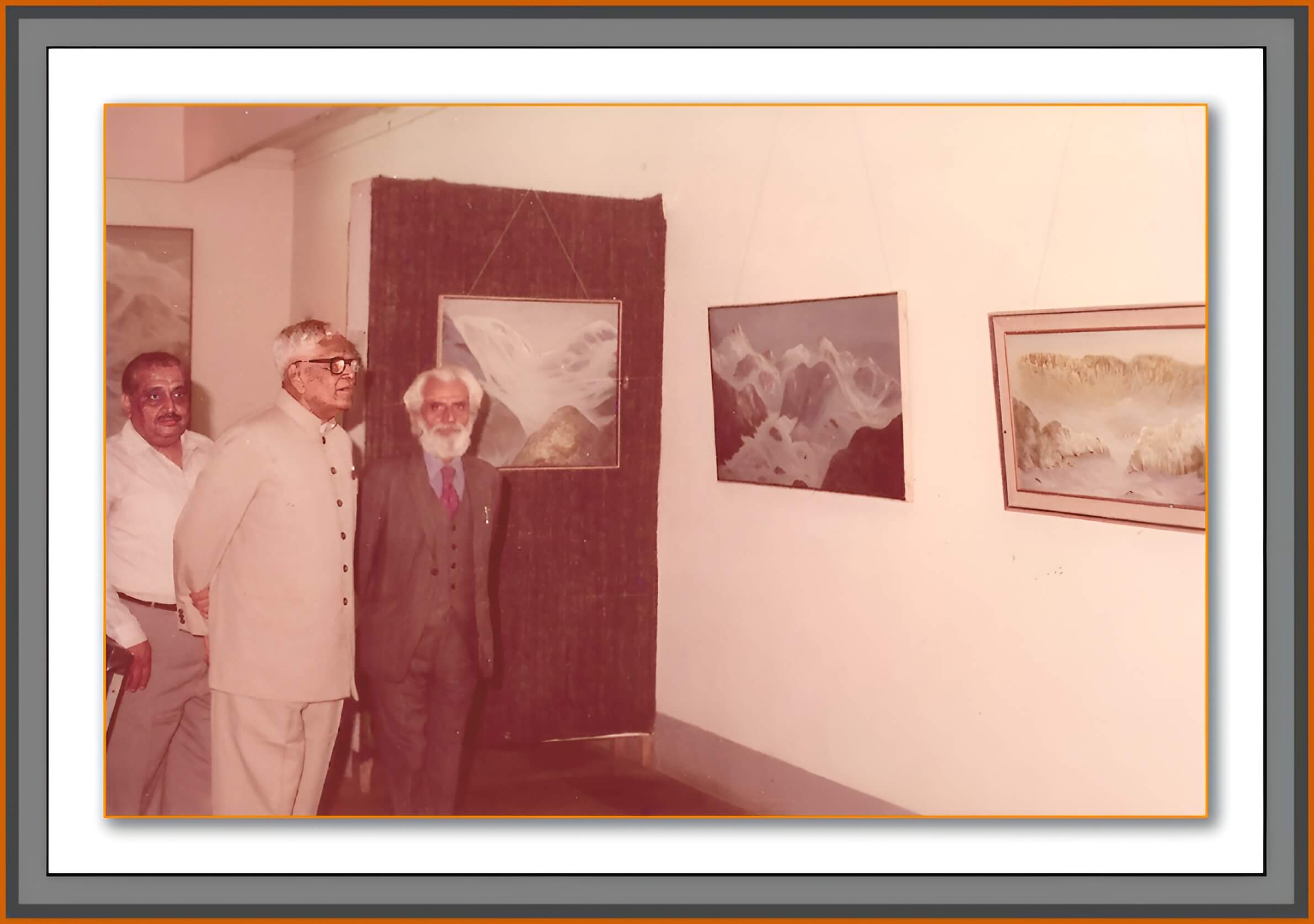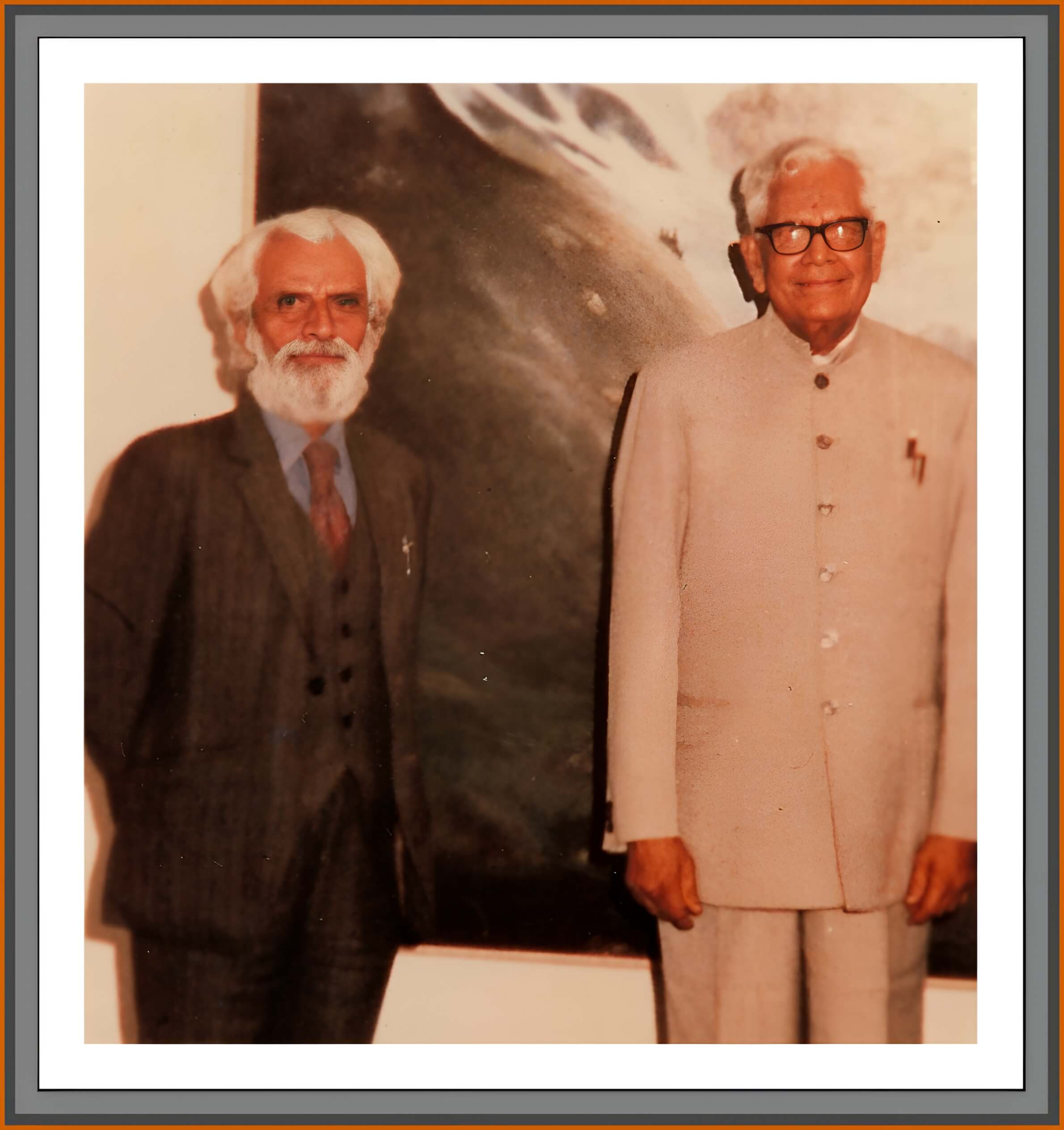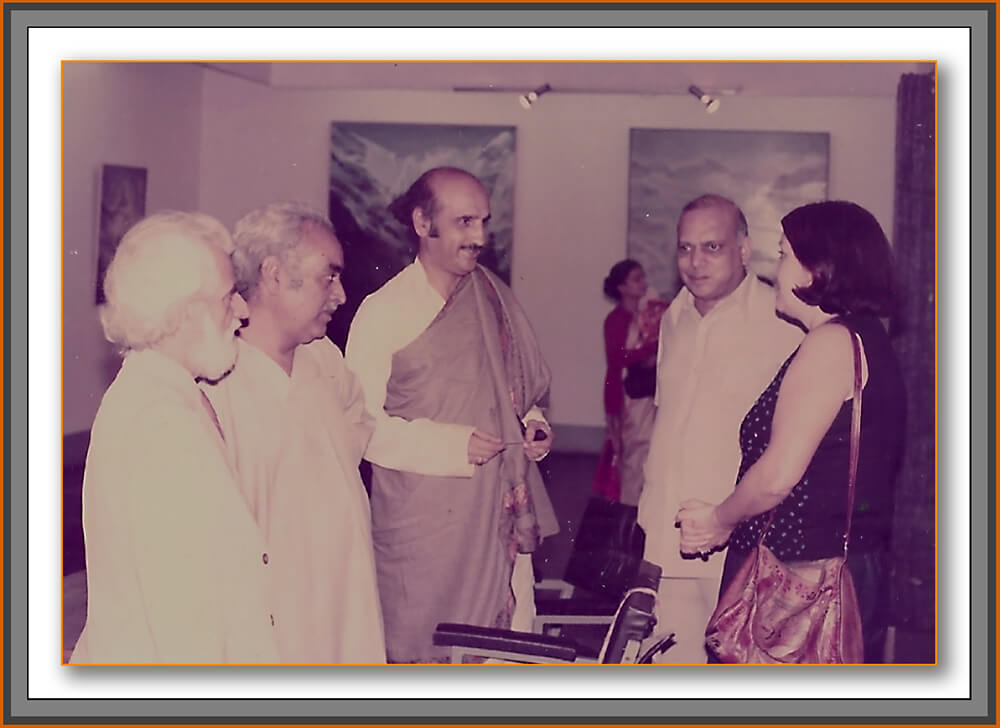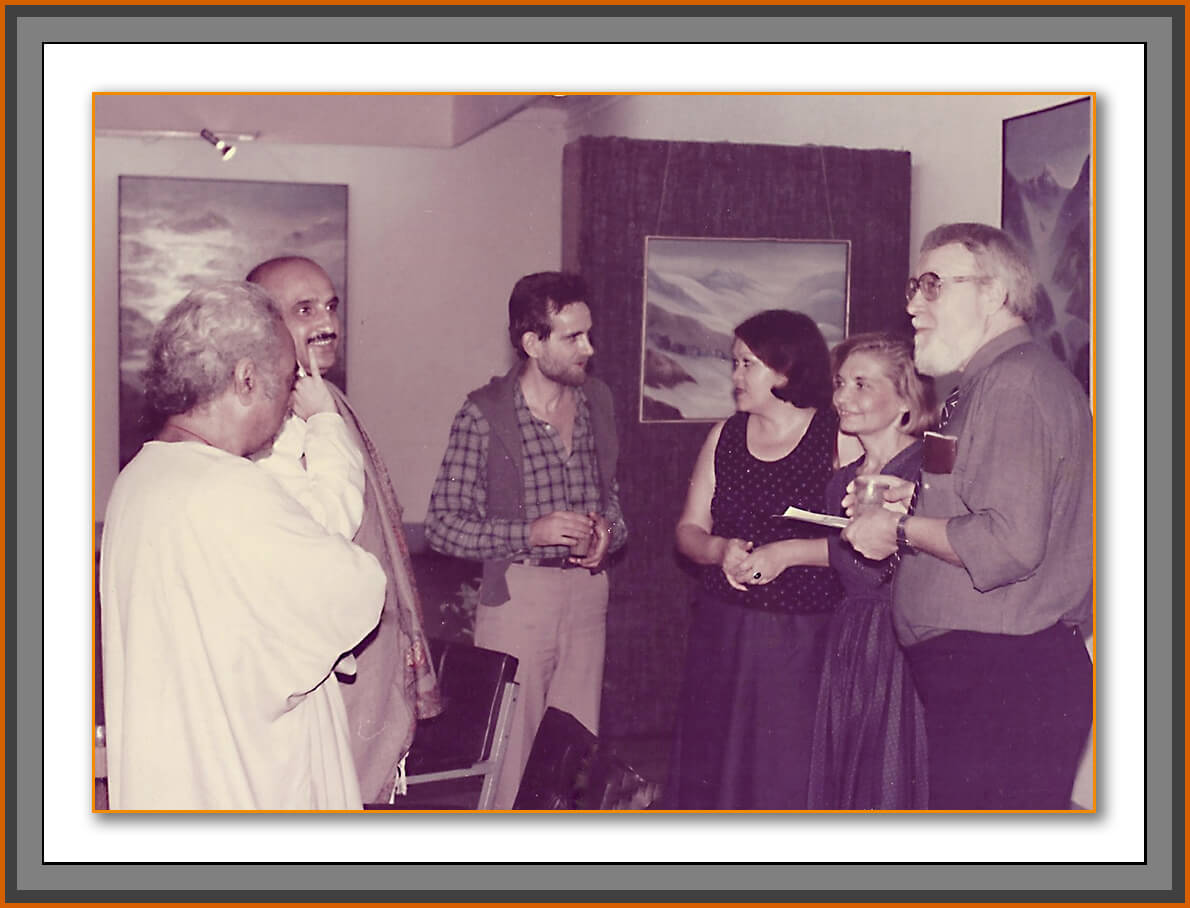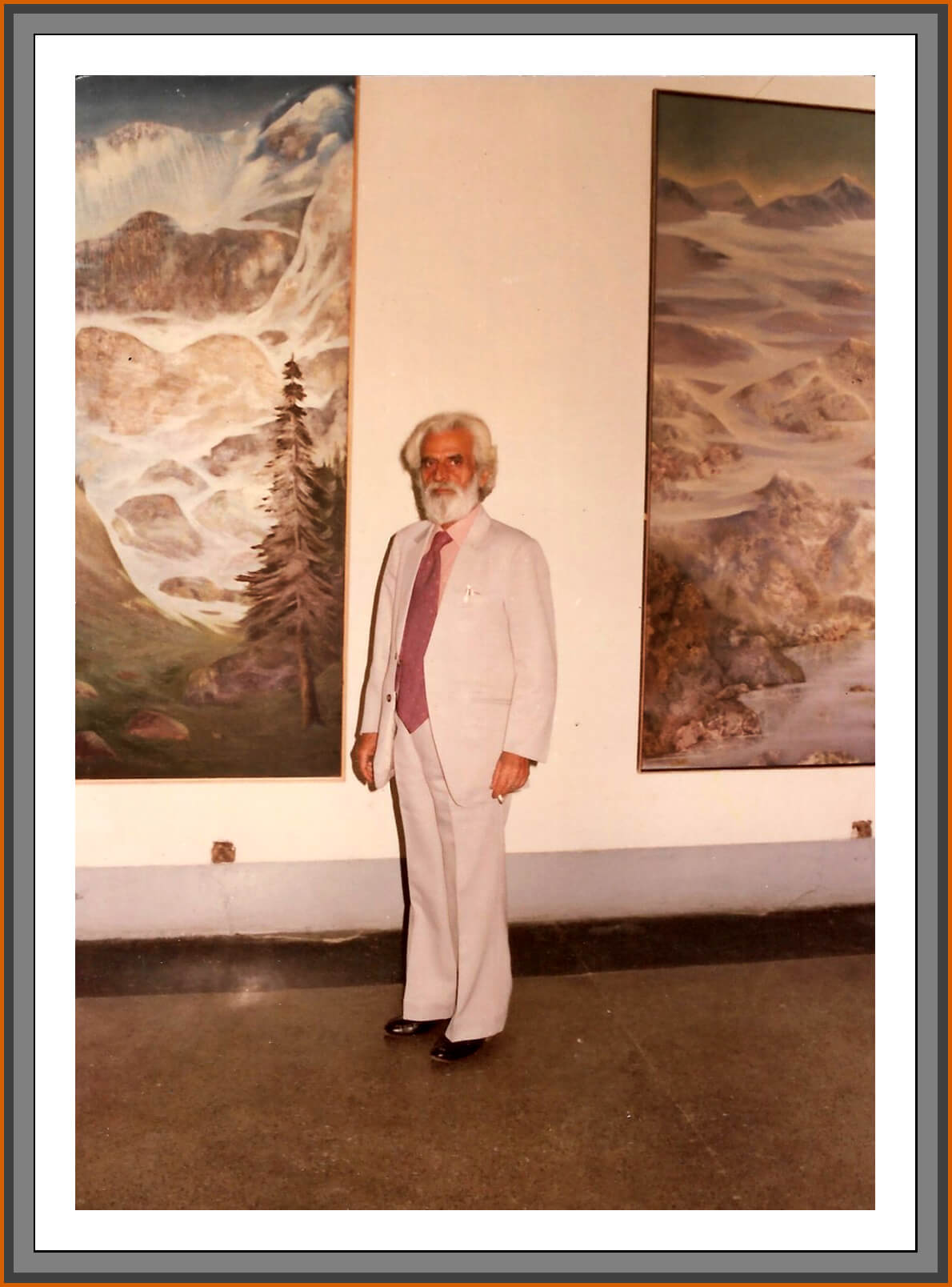Landscapes and Inner Visions
New Delhi, 1985
Organised by Dhoomimal Art Centre and held at AIFACS Galleries, this exhibition marked a mature phase in Manohar Kaul’s journey as a painter. Moving beyond naturalistic depiction, his Kashmir landscapes now revealed a metaphysical shift—toward silence, reflection, and spiritual resonance. Critics noted his ability to transform scenery into a “grandiose spectacle” where mountain, light, and sky became meditations on the sublime.
Catalogue






Press Reviews

The Statesman New Delhi, November 19, 1985
Captivating Expression of Nature
By Our Art Critic
The 60-year-old Manohar Kaul's art represents a 40-year journey into the unsullied attributes of the Kashmiri landscape — a journey marked by a gradual ascent from the physical toward the ethereal and the spiritual.
One cannot help but recall the fascinating phases of this journey and its slowly emerging landmarks. Its earliest manifestations lay in the diversified, colourful forms — the external vestments of inner urges that enchant the viewer in sylvan valleys.
But such external fascinations gave way to a more ardent yearning for inner truth, which now inhabits this superbly controlled and captivating expression of nature.
In two major exhibitions held in 1983–84, Kaul’s vision gravitated towards the vegetation-less higher reaches of the Himalayas. There, he sought an intimate communion with untouched rock forms, snow, their textures and structures, and their meditative postures— all amidst opening vistas of ageless grey and white hues.
His growth since then has been swift.
For his current exhibition at AIFACS in New Delhi, Kaul brings to view the very essence of the Himalayas — particularly their diversified displays of light:
In paintings No. 28 and 27, we see skies filled with airy pinkish-violet suffusions, highlighted by denser applications of colour below.
In others, a solitary peak glistens like a yellow sapphire, reflecting an upward thrust.
Elsewhere, misty yellow tones spread across snow-covered regions, forming soul-stirring amplitudes.
The essence of this grand spectacle lies in the musicality of its inner truth. It recalls the ancient dictum of our rishis, about the inherent link between “roopa” (form) and “shabda” (sound). Though ocular in its treatment of colour, Kaul’s art is also auditory in its perception.
This subtle duality is especially evident in the four extra-large canvases, where rocks taper into brownish-yellow flanks tinged with green, resting upon clear green and grey bases. One example is the first painting exhibited by the entrance on the left.
Kaul’s palette is rich and expressive, revealing a profound understanding of colour and a deep, joyous engagement with it. Marked by a search for spiritual purity, his art expresses inward serenity glowing on its surface.
In at least one work (reproduced here), there is a suggestion of two figures in conversation, projected through rock formations amidst snow. One profile faintly resembles Indira Gandhi, as though she were in animated conversation with Lord Shiva, whose mountain abode became her final resting place.
Quoting her own words — “I am a child of the mountains” — the artist has dedicated this exhibition to her memory.
On view daily from 1 p.m. to 7 p.m. until the end of the month.

Indian Express, New Delhi, November 28, 1985
Kaul’s Austere Beauty of Mountains
By Santo Datta
What strikes the viewer at the exhibition of Manohar Kaul’s oil paintings of the Himalayas is the steady progress in technique the painter has made over the past three years.
Mr. Kaul, whose works are currently mounted at the AIFACS Gallery, is a deep lover of nature, and the Himalayas loom large in his paintings. What is most admirable in his recent work is this veteran artist’s ceaseless endeavour to gain greater control over his medium — particularly impressive at an age when many artists tend to rest on their earlier achievements.
He has captured the austere beauty of the snow-capped mountains with remarkable sensitivity. Notably, paintings No. 1, 25, and 17 stand out. In the last of these, the crackling texture of the hard ice surface showcases his technical finesse.
The treatment of the ice-covered boulders and ledges in painting No. 16 is also notable, though the presence of the moon in the upper left somewhat veers the image toward a romantic cliché of mountain landscapes.
In painting No. 28, the overabundance of colour areas in the foreground seems to dilute the classical austerity that Mr. Kaul achieves so effectively in many of his other works.
This marks the third exhibition of Mr. Kaul’s mountain landscapes I have attended in the past three years, and it is impossible to miss the artist’s unflagging commitment to the technical challenges of rendering light and texture through pigment.
On view till November 30.

National Herald, November 27, 1985
Homage in Colours
By Our Art Critic
To pay homage to Indira Gandhi, the renowned landscape painter Manohar Kaul has organised an exhibition of his recent works at the AIFACS Gallery.
In his paintings, the beauty of the Himalayas comes alive on the canvas. Rendered in serene, pure, and sublime colours, Kaul’s canvases are both tantalising and deeply contemplative. His works blend elements of fantasy and mysticism, inviting the viewer into a spiritual experience of the natural world.
The multiple coats of colour applied to the canvas lend the paintings a translucent quality, almost as if light passes through them. The artist plays skillfully with violet, orange, and saffron hues, achieving subtle harmonies with meticulous brushwork.
Particularly noteworthy are paintings No. 1 and No. 5, where the handling of light — and the use of white highlights — is highly effective. These works stand out for their technical finesse and visual depth.
Kaul's distinctive use of rock browns and snowy whites, combined with his sense of form, evokes the Himalayas not just as landscape but as a sacred abode — the mythical 'Parvat'.
This exhibition, organised by the Dhoomimal Art Centre, is dedicated to the memory of Mrs. Indira Gandhi, coinciding with her birth anniversary. As the artist notes, “Mrs. Gandhi was a supreme lover of the Himalayas,” and it is fitting that he offers this tribute to her spirit.
Manohar Kaul, born in Srinagar in 1925, received his art education at the Sir A. S. Technical Institute, Srinagar, and the City and Guilds Institute, London. He is a recipient of the Jammu and Kashmir State Cultural Academy Award, and has also authored books on art.
The exhibition will be on view till November 30.

Art - The Times of India, November 18, 1985
Manohar Kaul
(at AIFACS, organised by Dhoomimal Art Centre)
By Keshav Malik
Manohar Kaul is from Kashmir, but now lives amidst the flats of the Indo-Gangetic plains. Yet, the mountains continue to call to him. They appear like dreams—symbols of the purity that is missing from the overwhelming complexity of the big, chaotic town around him.
Purity—what is it? Ice and snow, of course. In one way, they resemble death itself; in another, they reflect the impeccable clarity of meditative thought, a sense of penitence. One must retreat toward this alter ego, this world soul. And this is exactly what Manohar Kaul does.
Yes, others have done so too—but that’s beside the point. Kaul does it well, especially within the tradition of the landscape genre.
His work is not weighed down by banal realism, but instead offers ample abstraction. His foregrounds and backgrounds often possess a rare ethereality. These are not maudlin or generic mountains — they are deeply personal, revived experiences.
We appreciate the work on its own terms. That Kaul has not bent to changing styles or followed artistic fashions shows his indifference to the trends and foibles of the times. His art remains simple, but sincere.
Exhibition Highlights
Archival photographs from the 1985 exhibition of Manohar Kaul’s Himalayan paintings, capturing moments with fellow artists, eminent guests, and friends who came to view the work.
